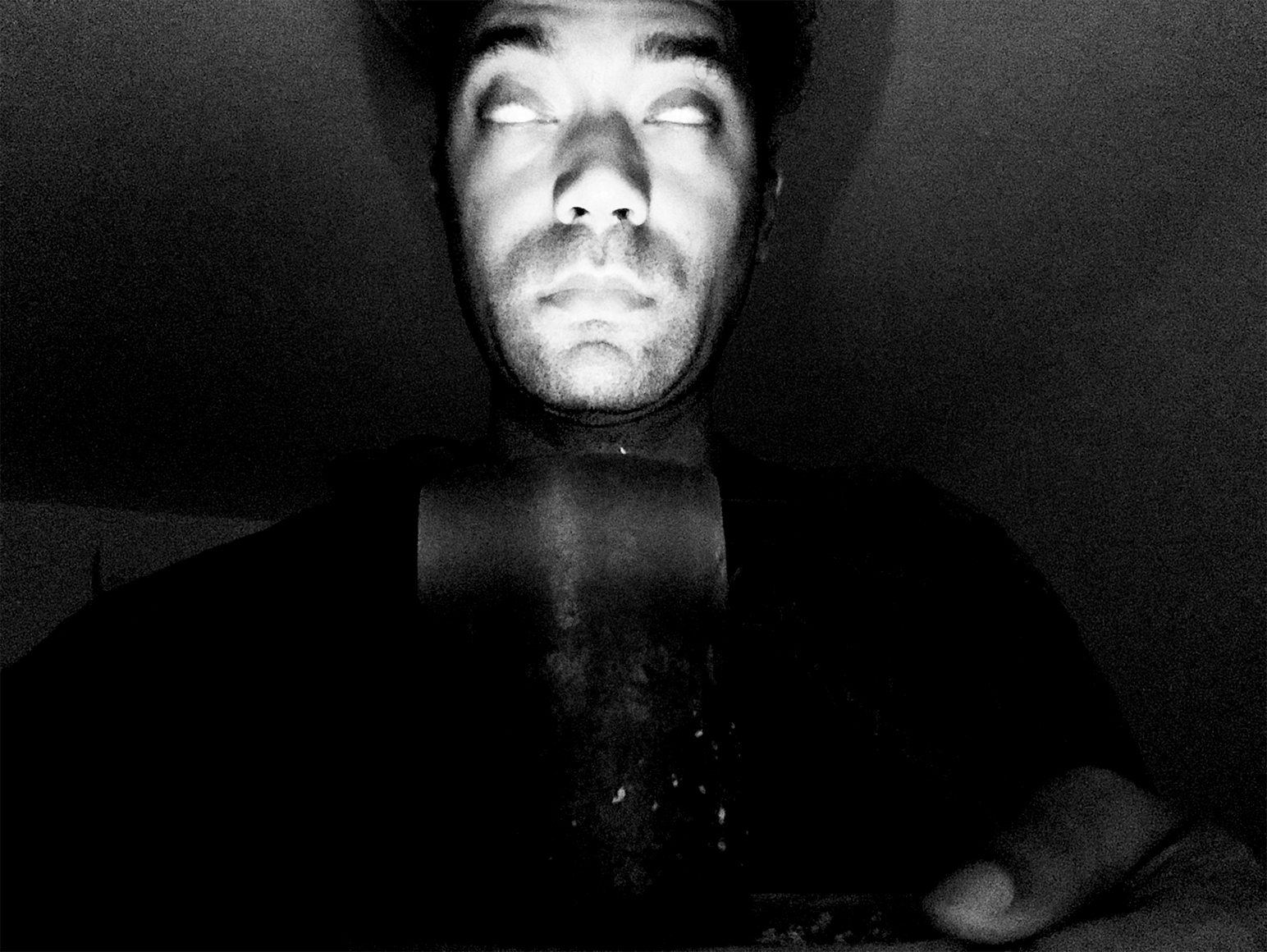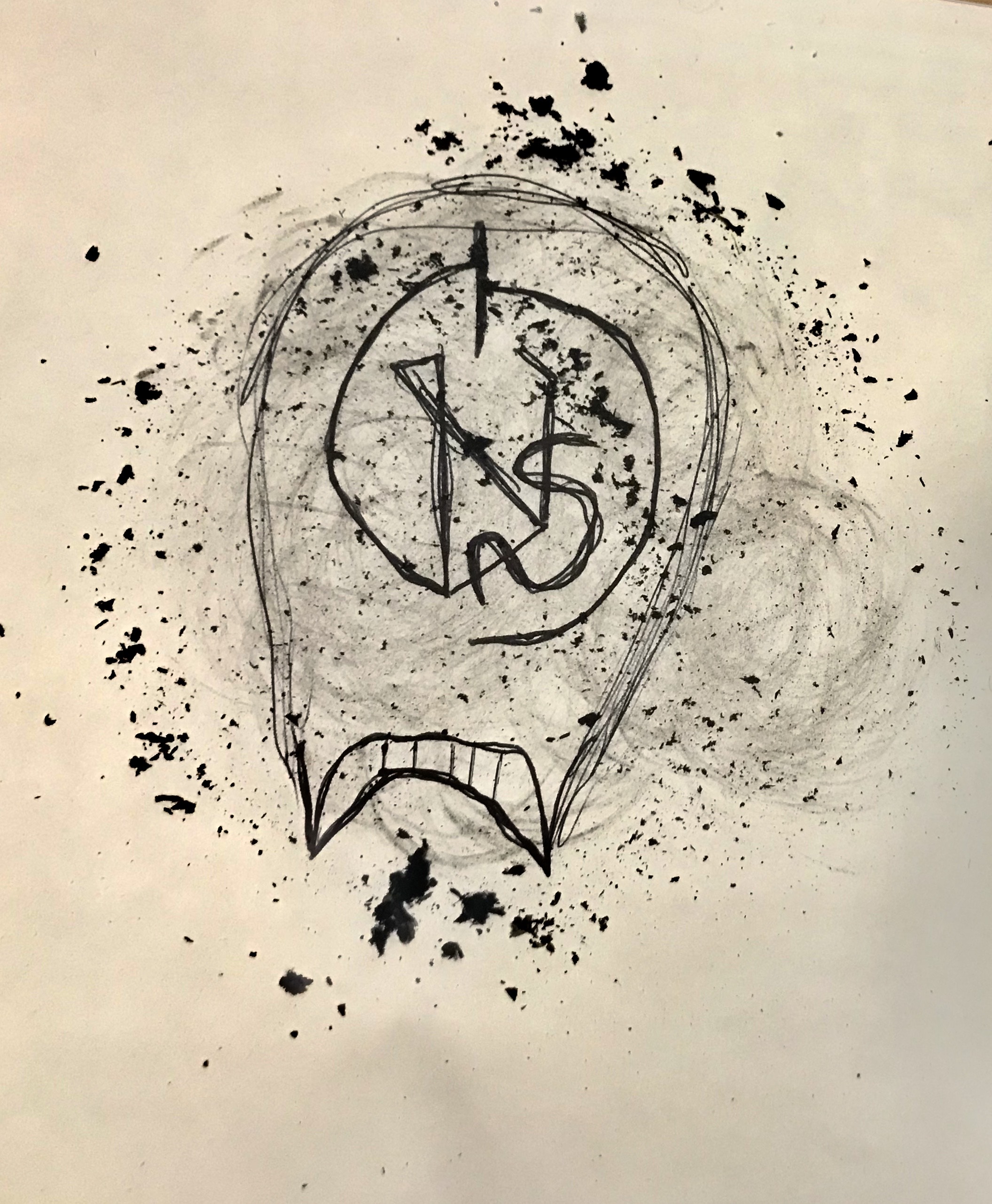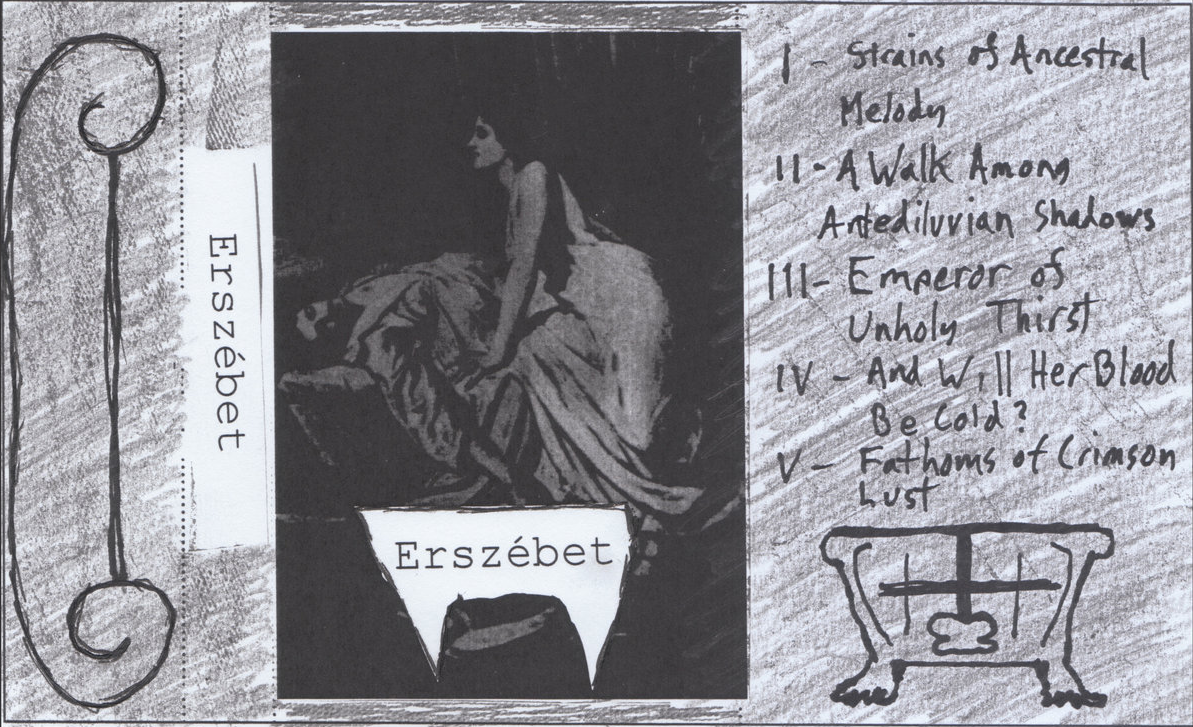Interview with Erszébet
9/13/21 | J.R.
From a cataloging of mushrooms in New England to darker folk tales which grip hidden countrysides, Adam Matlock’s name is attached to many dungeon synth projects. It is through Erszébet, however, that he taps into a darkness not found anywhere else in his expansive discography. Concentrating on the folk-horror elements of vampiric lore, Erszébet's autumnal darkness graced the mysterious Canto Críptico label in 2018 before returning to its coffin to sleep, perhaps eternally. Though Matlock admits a new Erszébet has been in the works for a lengthy period of time, his penchant for perfection and a perfect recreation of—but also growth in—the gloomy, spectral sound of an eternity of isolation.
In a new interview, Adam Matlock discusses the Erszébet project at length, explaining the automatic creative process which fueled the first and only Erszébet tape, his plans for the project's future, and his vampire story preferences.

With your Erszébet project, you explore a different kind of supernatural darkness which doesn't get explored in your many other projects. What made you decide to take this approach with this project in particular?
Adam Matlock: Truly, it was the weather. I remember that when the first album was recorded, it was a week in February during which it bounced from below freezing, snow on the ground, to a temperate thaw within the matter of two or three days. I have lived in the Northeastern US for most of my life, which has become less defined by distinct seasons in my lifetime, and thinking about that progression of time with some fear brought me into a very dark headspace that somehow invited thoughts of vampirism.
Do you feel a personal connection to this idea of vampirism and accused vampirism in history beyond the realm of art?
A: I think I am more interested in the folk tales and the literary traditions more than I am in the historical cases of vampirism, despite the name of the project. That said, I do believe that there are plenty of interpersonal behaviors humans do to one another that have nothing to do with the transmission of blood, that nevertheless feel very vampiric. But no fangs in my medicine cabinet, as it were.
How do you find yourself communicating these instances of vampirism, be it in folk tales and lore or historical accounts, in instrumental music?
A: Let’s put it this way - the iconic vampire telling in my formative years was Bram Stoker’s Dracula by Francis Ford Coppola. To me, there is an inherent sensuality, romanticism, and overt sexuality to vampiric tales, but hidden behind the relative chastity of a Victorian framework. So for the first album, it felt appropriate to utilize some gothic and romantic musical tropes in trying to connect with these. In the years since, there has come to be a clearer definition of what the “vampiric sound” is, so in working on the follow up I’ve changed course a few times, for that among other reasons.
This is an outlying take when compared to the more modern take on the "wampyre," which is less sensual and leans more towards wickedness and malice. Do you feel your more romantic and traditionally Gothic portrayal of the vampire makes you an outsider?
A: I guess it depends on whether you’re referring to aesthetically or musically. I do feel like there is now a pretty clear blueprint for what vampiric music sounds like, and to my ear it is romantic - the use of pianos, harpsichords, organs, a lot of melody and melancholy. I guess it sometimes is surprising to hear that blueprint applied to the more malevolent images of vampirism - but I think there has been some valuable nuance in the last few years, attempts to mix and match the sonic and aesthetic elements in less obvious ways.
You brought up melancholy, which I think is an aspect of the vampire which isn't often explored outside more romantic portrayals. What types of melancholy do you draw from when crafting Erszébet music?
A: Well, melancholia is a nicer sounding word than depression, if we’re being honest. But beyond biochemical realities, I do find a certain affinity for tragedy, in the poetic or dramatic sense. I feel the droll voice narrating and singing throughout the album is so eager for the touch of someone who could either kill him, or damn him to the weariness of insatiable hunger and eternal life. But that could stand in for any unfulfilled promise, unrequited love, anything fiercely desired that is impossible to obtain. The act of longing, of being dissatisfied, is always a bit tragic, because what if the thing you always wanted is not what you imagined? Beyond that, there is something about a misty or rainy city that drives this imagery into my brain in a way I cannot resist.

You are a versatile musician with projects in a cornucopia of styles - what about dungeon synth did you feel made it the most appropriate for these themes?
A: I guess it wasn’t quite that conscious of a decision. As someone who had already dabbled in a number of side projects, at the time of recording as well as now, dungeon synth is my main musical output, so the likelihood that anything I start out recording is going to end up being dungeon synth is pretty high! That said, it definitely helped that there was precedent with Vampiric dungeon synth.
Why do vampirism and dungeon synth work together so well?
A: I do think that the genre and the vampiric theme both reflect a romanticized view of what it is to be in solitude, either physically or psychologically isolated from others. I think it also helps that the canon of western vampiric lore has a real connection with antiquity, whether it’s the historical figures that helped to inspire the mythos, or where vampirism has become kind of an unofficial part of biblical literature. It dovetails nicely with the way dungeon synth tries to present idealized views of history, often through a fantastic lens.
You namedrop a few other vampiric dungeon synth artists in your Bandcamp bio (Crypt of Carmilla et al). What makes these projects special when compared to the majority of vampiric synth?
A: The answer to this one is, I’m afraid, a bit boring. These were just the projects that existed that I was aware of at the time, kind of a “game recognize game” statement. I think it is definitely notable that it took as long as it did into what is now understood as the dungeon synth revival for artists to start producing music with vampiric themes, though.
Where do you look for inspiration?
A: With any highly specific genre or form of music, I think it makes a lot of sense to look outside of the genre for inspiration as well as within it. I have some formal keyboard training, and so it certainly was helpful to look towards Baroque and Romantic era keyboard music, particularly, while trying to create this musical world.
Of course the specter that haunts the world of vampiric dungeon synth is the defunct Greek group Lamentation. I say haunts because both members went on to be a part of blantantly National Soclalist band called Der Sturmer, which has churned out racist and antisemitic garbage under the banner of black metal for over 20 years. I won't pretend that I didn't encounter them in my early explorations of dungeon synth, or that they weren't in some way an inspiration - I believe honesty is key in facing the complex issues of the world. That said, we should be honest with ourselves that a great majority of their work sounds like someone who only learned the recognizable bits of Beethoven's "Moonlight Sonata" or Bach's "Prelude in D minor," and refused to practice further. We can credit them for possibly being the first to do this, but at this point they've been rendered obsolete musically and atmospherically by a great number of contemporary projects.

It's been three years since the public last heard from Erszébet. Can we expect new material?
A: There is a followup in the works, yes. The plan was to get significantly more ambitious with it, including getting a guest vocalist as well as a rag-tag choir for some interludes. The pandemic significantly changed the likelihood of that happening, so the album went back onto the shelf, but the material has at least begun. But as is often the case with sophomore albums, where the debut took two days to write and record, the follow-up has now taken over two years.
What challenges have you experienced with this new material?
A: Part of it was being extremely self conscious of producing the same album again. Sometimes in the midst of a heavy creative streak, I have spent tremendous effort coming up with a chord progression or a melody only to discover it's something I've used before. Given the importance of piano to this project, muscle memory has made that happen more often than I would like sometimes. But part of it is trying to look beyond my initial association with vampire stories - to not simply create another vampiric tragic romance, but to explore what other narrative possibilities exist that could inform the music differently.
Through these challenges, what have you learned about the Erszébet project and concept?
A: The process has certainly taught me patience. I can attest to the fact that sometimes the process of creating DS feels very much like regurgitation, wherein you immerse yourself in a style or aesthetic and then do your best to recreate it. If I did that here, it would be a bloody mess.
Do you feel Erszébet has changed between these two efforts?
A: I think my way of engaging with a set of source materials as an artist has changed - where before, doing any kind of research for a project, whether reading, watching films or what have you was just a matter of a couple of days’ immersion whereas now it is a more gradual process, feeling sometimes like I’m creating a parallel world in my head that I need to be able to visit with some lucidity to capture the feeling that makes a project distinct.
Why is it that creating something in succession is more difficult than the actual impetus of an idea?
A: It has been for me because I want each successive visit to a musical world to be more immersive, more detailed, if possible. It’s not always the case - sometimes you can just provide contrasting snapshots of a world and that’s enough to keep a project interesting, as an artist. Going deeper is for me almost always challenging and seems to pose a higher risk of producing a copy of a record you’ve made before.
What do you want this next Erszébet album to accomplish beyond increased vividness?
A: I would like to try and push the envelope on dissonance a bit. It’s a bit of a pet peeve that sometimes people set out to make music connected to the most putrefied visual aesthetic, and then the music is this fairly lush goth melodic stuff - which is a sound I love, but feels like a hard default for this subject matter. In general I would love for DS to be more comfortable with dissonance beyond the ways it’s used in metal.



